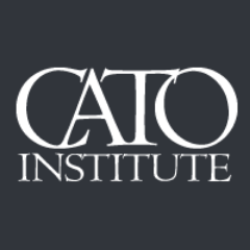Hollywood the marketing tool of the New World Order
1. Culture Industry
2. Hollywood as a global film Industry
3. The power of movies
4. Things Hollywood push
5. What is Predictive Programming
6. Recurring predictive programming themes
Culture Industry
Films are one of the most powerful propaganda medium, they never were sources of just entertainment. Hollywood movies apart from peddling war propaganda also prepares people for the coming changes that the elite have planned.
It’s not just the movies but the culture industry in general. By Culture Industry I mean the use of diverse sources of entertainment to form a dominant culture (use of music, movies, fashion, video games, novels, magazines etc as cultural weapons).
The term culture industry was coined by the Frankfurt School philosophers, Theodor Adorno (1903–1969) and Max Horkheimer (1895–1973), and was presented as critical vocabulary in the chapter “The Culture Industry: Enlightenment as Mass Deception”, of the book Dialectic of Enlightenment (1944), wherein they proposed that popular culture is akin to a factory producing standardized cultural goods—films, radio programmes, magazines, etc.—that are used to manipulate mass society into passivity. ( https://en.wikipedia.org/wiki/Culture_industry)
Hollywood as a global film Industry
Hollywood movies are watched around the globe and local movie makers copy what is being turned out by Hollywood. Hollywood is the ultimate propaganda tool to create global culture. Just 6 major film studios (Universal Pictures, Paramount Pictures, Warner Bros. Pictures, Walt Disney Pictures, Columbia Pictures, 20th Century Fox) that are part of six diversified media conglomerates dominate the hollywood, whose various film production and distribution subsidiaries collectively command approximately 80–85% of U.S. box office revenue.
(Source wiki https://en.wikipedia.org/wiki/Major_film_studio)
The sector could be defined as an oligopoly, with few (six at the present time) major players, all units of publicly traded media and entertainment conglomerates, accounting for the large majority of the product distributed in the United States and globally. The Hollywood studios, both domestically and internationally have a clear leadership at the box-office. Data from Box Office Mojo (http://www.boxofficemojo.com) report that over the period 2001–2006, the market share of the six Hollywood studios (considered within their conglomerates) averaged approximately 80% or more in the US theatrical market (Amobi and Donald 2007a, p. 7). Also globally, the six Hollywood studios consistently rank at the top of worldwide charts in approximately the same period, as reported by Show biz data (http://www.showbizdata.com). In particular, Warner Bros. ranked first with 16.2% of the global theatrical gross in 2007, Sony/Columbia Tristar in 2006 with 16.4%, Warner Bros. in 2005 and 2004 with 15.7 and 14.2%, respectively, and Buena Vista International (the distribution arm of the conglomerate Disney) in 2003 with 18.1%. In the same 5 year period, only once was there a non-US or non-Hollywood affiliated distributor among the top 10 positions in the share of global gross theatrical revenue (the Japanese Toho ranking tenth in 2006). –
The Digital Glocalization of Entertainment by Paolo Sigismondi
The power of movies
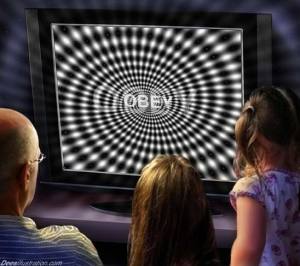
Movies can inspire, motivate or even demoralize people on a large scale. Think of the last time that you have been mentally lost while watching a movie, spellbound staring at the screen, losing all sense of time and place, like it happens in a hypnotic state. Forgetting for the moment being that it’s all fiction and scripted. Almost in a trance state watching fictional characters being played by actors, you felt all the emotions, you felt good, angry and horrified, the scenes and ideas remained in your mind. You may even have thought of them over and over again. You discussed them later with your family and friends, even years after you watched a movie. This shows how powerful the effects of movies can they can be. Movie making is an art, storyline is written well, all complicated concepts are simplified and the underlying message is communicated very well. Very little is truly left for the viewer to think over during the movie and he or she watches all the scenes spellbound. He doesn’t need to pause to think anything, because everything has been presented so well.
The technique of using theatre and other forms of art as a weapon is very old and has been used since ancient times. Plato talked about using arts to mold people’s mind in his book the Republic. Plato advised censorship of literature for schools and advocated control of poetry, music, painting, sculpture and architecture. (Mind Control in the US by Steve Jacobson).
Art is powerful, and therefore dangerous Poetry, drama, music, painting, dance, all stir up our emotions. All of the arts move people powerfully. They can strongly influence our behavior, and even our character. For that reason Plato insisted that music (especially music), along with poetry and drama and the other arts, should be part of the education of young citizens in his ideal republic, but should be strictly censored. (http://users.rowan.edu/~clowney/Aesthetics/philos_artists_onart/plato.htm)
Things Hollywood push
Hollywood and Culture Industry is not just about predictive programming, It promotes or pushes numerous agendas. Glorification of violence and hyper sexualization have been its favorite agendas for a long time. Sex and violence have always existed in movies. Apart from that they push things like Feminism, Eugenics, Terrorism hype, Gender Bending, Historical Revision (false histories of World Wars, Vietnam War, Native Americans etc), Mind Control (specially there are reference to MK Ultra and monarch programming), War Propaganda, Military Recruitment.
Movies, Music videos, TV Shows etc have a lot of agendas to promote.
What is Predictive Programming ?
According to a wikipedia definition
Predictive programming, a theorized method of mass mind control, proposes that people are conditioned, through works of fiction, to accept planned future scenarios. Researcher Alan Watt defines this phenomenon as “the power of suggestion using the media of fiction to create a desired outcome” .
That definition by wiki isnt too detailed but it does give a good idea.
The idea of Predictive Programming is simple, the populace is prepared or programmed in advance for the coming changes with the help of fiction. It is an act of psychologically engineering the masses. Radical changes would be rejected by the people and a conditioning process is required to make them acceptable, this conditioning is done indirectly using fictional sources like movies and tv programs. In this way people are exposed to the ideas and concepts of the desired changes as they are interwoven in the storylines of movies, tv shows, music videos, novels etc. After this has been done for a long period of time, slowly the changes are implemented and become the new norm. This process of psychologically engineering people for the future with the help of movies and other forms of entertainment is called predictive programming. People are trained unknowingly for the coming changes subtly with the help of fiction. Its a form of mind control. Why predictive programming is necessary is because It’s difficult to break people’s habits and customs, they like familiarity and routine. You can’t just order people to march towards a change. You first need them to prepare them.
The desired future concepts and ideas like for example transhumanism are present everywhere in popular culture. All these ideas and concepts are embedded in the collective psyche through fiction. They were already present there in the public subconscious mind before becoming reality.
This is the how the process of predictive programming works
1. Desensitize (exposure)
2. Repetition (conditioning)
3. Multiple platforms to convey the messages (music, fashion, novels etc)
4. Slowly and systematically the concepts are normalized (successful conditioning)
5. People accept the changes as normal and natural (desired outcome)
Desensitize – Expose the public through movies to a new idea or concept for example humans and robots merging. As its fiction so people won’t oppose any such suggestion, and consider it as simple fantasy. With movies you can show the public any bizarre, absurd, twisted content because it’s all fake after all. People don’t react strongly and watch it as their censors are down. They aren’t judging anything, duped into thinking it’s just harmless entertainment. Desensitization means the state of shock and anxiety have been resolved. People would no longer feel or see the change as awkward, surreal, bizarre, absurd, disgusting and instead would become used to it and accustomed. They would no longer feel disturbed or uneasy. Also too much investigation won’t be carried out by average man as he would form preconceived ideas and beliefs. In fact he would be leaning to think in favour of the changes.
Repetition – Repetition starts to hard wire the concept in the public mind. Somehow creating a permanent place in the subconscious mind. Repetition means conditioning, more and more movies show the same things again and again. The public mind is inundated with the underlying concept for decades. (for ex Transhumanism).
Other forms of entertainment like music videos, tv shows, fashion magazines, novels, comics pushes the same themes, the underlying concepts are present everywhere and its not just the movies.
People become used to watching the same things year after year and through different mediums. They become part of the collective psyche. They become like any other normal thing. After successful exposure over a period of time, the changes are presented to the public. Fiction becomes Fact. People don’t react strongly and don’t protest in any way. As if it’s all a natural progression. For example Scientists are openly advocating and governments are planning to implement a number of transhumanistic changes like using robotic soldiers. (The U.S. Army Is Turning to Robot Soldiers https://www.bloomberg.com/news/articles/2018-05-18/the-u-s-army-is-turning-to-robot-soldiers).
Would had all this been possible without the help of the culture industry ? would people have reacted the same way if not conditioned through fiction. ? I don’t think so. Changes are first introduced through movies. The concepts and ideas are incorporated in the story line. Movies are assisted by tv shows, cartoons, novels, comics etc. After enough exposure through these mediums of fictional entertainment, the changes are publicly announced and are generally accepted by the masses. The authorities don’t have to face much rebellion and disapproval, as the masses have been already programmed to accept the changes.
If changes are implemented without the proper conditioning, people will oppose them and reject them. They can clearly analyze what dangers they possess and how they may affect them. The elite agenda would be halted. So a conditioning process is essential to accomplish public consent.
Movies are not only about entertainment but also gradual conditioning of the unsuspecting public to certain ideas, concepts and changes. Movies are great ways to program the people and especially the youth to a specific vision of the future. Police brutality in movies and tv shows became reality, Biometric ID card system is another good example of the successful use of predictive programming.
Why they succeed
As people think movies are all about entertainment for viewers and money for producers, they never stop watching them, people never suspect that movies can be used to program them. If the Nazi party manufactured or financed a movie, people would boycott it or would watch it with skepticism, people don’t think the same way regarding Hollywood movies because they believe they are created without any agenda and purely for entertainment reasons, contrary to the popular belief, Hollywood movies have been from their very inception used as vehicles of propaganda and tons of information is out there that clearly documents the connection that the CIA and Pentagon have with Hollywood movie makers. Case in point
After the 9/11 terrorist attacks, George W. Bush’s Deputy Chief of Staff, Karl Rove, invited almost four-dozen of the Hollywood power elite to the Beverly Peninsula Hotel and asked for help garnering support for the neocon policy agenda, including wide-ranging homeland security measures and the waging of war in Afghanistan and Iraq. Following the meeting jingoistic war films such as Black Hawk Down, We Were Soldiers and Behind Enemy Lines were rushed into cinemas. (https://www.theeuropean-magazine.com/guy-westwell–2/6354-film-as-propaganda)
As the myth of neutrality prevails, People’s guard is down and their minds are open to suggestion. As Hoffman says real sales pitch begins when people can’t see the advertisement of the propagandist. They fail to realize that movies are not just made for entertainment purpose only but also for other reasons. The main reason being to program the minds of the viewers for the acceptance of certain ideas and concepts.
Recurring Predictive Programming Themes
Below are some recurring themes (what are the elites programming the public mind with).
Keep in mind that some movies may have more than one theme. Like Matrix (Transhumanism, Dystopia, New Age).
Transhumanism – A common trend since the 1970s. Although the first example of a transhumanist movie can be of Metropolis released in 1927. All the transhumanist concepts have been present there in movies, things such as androids, merging of humans and machines, advanced AI, virtual reality, borg, clones, chimeras, mind uploading etc have been subjects of a number of movies, tv shows, music videos, fashion magazines and novels. Some example of movies pushing this theme are Island, Lucy, Blade Runner, Terminator, Matrix, Moon, Transformers, Johnny Mnemonic.



Dehumanization – Hollywood has been busy churning out movies full of gore and blood. Ugliness is everywhere in film and TV, isn’t art about beauty ? Dehumanization is a weapon of war. We are being dehumanized, this means we are the enemies. These gore movies keep portraying merciless torture, horrific murders, mutilation, abuse and all kinds of depraved and despicable content. Why are they making us watch all this ? These gore movies are made for a wider agenda to remove humanity and empathy. People don’t feel when they see such suffering and horrendous acts in real life. They are trained to watch such content consistent basis and get used to it. It’s like turning people into sadistic psychopaths, just like what the elites are. We are unknowingly conditioned to see humans as just like any other animal. Human life has lost value. Is Hollywood trying to normalize the abnormal. Apart from movies like Saw and Hostel we also have music videos, tv shows and even fashion magazines that are full of dehumanizing content. The movie Hostel is pretty interesting, it’s about elite torture rings. Do such elite torture rings exist in real life ? are the makers of the movie secretly trying to divert our attention to that fact ?
Hollywood is busy exposing the public constantly to unsettling scenes of torture, gruesome murders, over the top violence, horrific abuse, mind control and everything else that is low and despicable.
Why create such debased movies. To create a debased culture it seems. They really like to show graphic content that will give nightmares to the audience, almost a form of psychological torture. Are they doing all this to get people ready for the coming planned cull and don’t want people to empathize with someone savagely killed by police or military, not to give a second look at the victim as they have got used to watching ten times more worse stuff, is it done to remove humanity ? I think so, good way for preparing the masses for the coming real life gorefest as total martial law will be instituted. The violence and torture is so realistic these days as technology continue to progress, that it seems almost like watching a snuff film. Maybe one day live torture and death will become a new form of entertainment, like it happens in the movie Death Race, and just like now, people wont have a problem with that in the future. The fictional world of Videodrome has unfortunately become reality.

Videodrome (1983 Canadian movie) in which the masses become obsessed with the lurid sex and gore tv show.
Disaster Movies – Another recurring theme is of disaster movies with all kinds of catastrophe, cataclysm and doomsday scenarios. In these movies we witness all kinds of tragedies including outbreak of pandemic diseases, natural disasters like asteroid collisions, earthquake, volcanic eruption etc. In reaction to all this, whole countries and even the entire planet gets in panic and disruption after that what follows is lawlessness, chaos, anarchy, rioting, massive food shortages and mass deaths become the new norms. Example- San Andreas, 2012, Contagion, Geostorm etc. (Are the elites going to trigger these disasters themselves using HAARP technology or Biological Warfare in the future ?).


Dystopia – Movies along this theme are in a futuristic setting and promulgate ideas like the world state, totalitarian system characterized by militarized police, total surveillance, people need a pass to move out of their fixed zones, everyone is drugged in order to suppress emotions and rebellious thoughts, people are designed for their work, genetically engineered, even killed after a certain age, no freedom or rights only obedience to the state is acceptable. Highly planned society with biometric ID cards, databases, euthanasia, genetically engineered life forms, rationing, thought control using chemicals and drugs, All kinds of methods to control the public are used. Even the natural environment has changed drastically and people are forced to live in underground cities, with no sunlight, contaminated air etc. Hollywood movies have a very dark vision of the future. Examples – Code 46, Gattaca, THX 1138, Equilibrium, Minority Report etc.
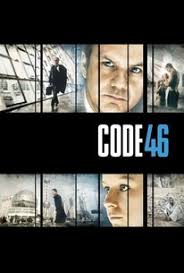

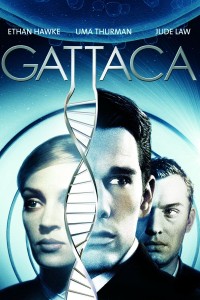
Occult & New Age – Occult invasion of the culture industry is not something new but it has increased a lot in recent times. Occult promotion is quite blatant with madonna becoming a Kabbalah practitioner. (https://www.ibtimes.co.uk/kabbalah-strange-ancient-jewish-mysticism-that-madonna-popularised-1507927)

Occult symbols, ritual murders, even direct mentioning of secret societies, masonic initiation and occult ceremonies in movies, tv shows, music videos is now pretty common. So many comic artists are occultists and encode their works with occult themes (Grant Morrison, Alan Moore etc).
Not just comics but also movies, music videos, fashion magazines are full of occult symbolism. Even music award shows turn into occult ceremonies with celebrity performances full of reference to occult concepts.

Performance during a music award show alluding to masonic initiation
Occult Symbology is everywhere in popular culture. Example of some movies with Occult themes are Rosemary Baby, Eyes Wide Shut, Wickerman, From Hell.
New age spirituality is just the same occult revival according to many researchers.
Many of the occult practices and beliefs revived by the modern NAM were a part of very early pagan cultures. Many practices common to the NAM, such as witchcraft/sorcery, spiritism, divination, (clairvoyance; seeing the future), necromancy (consulting the dead), and astrology, are clearly and strongly condemned in Scripture (Deuteronomy 18: 9-17; Isaiah 47: 9-15). These and other occultic practices were spread through the ancient magic and mystery religions of the Chaldeans, Egyptians, and most notably, the Assyrian-Babylonian culture.
(http://www.rapidnet.com/~jbeard/bdm/Cults/newage.htm)
Famous movies based on the teachings of the new age include Matrix, Star Wars, Space Odyssey 2001, Avatar.
Movies, music videos, fashion magazine etc are full of occult symbols. Why is the entertainment industry obsessed with the occult?


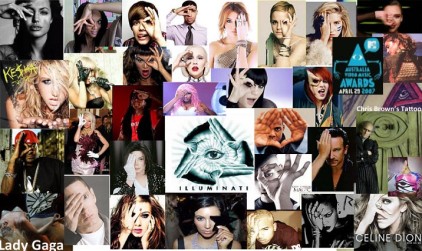
“The issue of controlling humanity with esoteric words and symbols encoded within a play, a media spectacular or a ritual is one of the most difficult for people to comprehend. That is why most people are viewed with utter contempt as “cowans,” “the profane,” the “gentiles” and the “goyim” (cattle) by secret society initiates.” – Secret Societies and Psychological Warfare Book by Michael A. Hoffman II




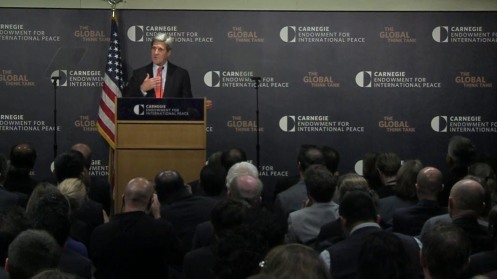
![Page1 [www.imagesplitter.net]](https://endalltyranny.files.wordpress.com/2017/06/page1-www-imagesplitter-net.jpeg?w=700)

















